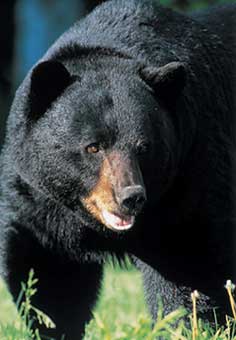Deer Hunting 2006-2007 Season | Stick Season | Vermont Black Bears
Did you know that you can upload your hunting pictures to our new hunting photo library?
 |
Deer are ghostlike in their effortless movements. Always alert. Dark eyes, peering. Brown ears tuned. If it were not for the occasional leaf crackle under a hoof they could be easily mistaken for shadows. I remain motionless amidst the subtle circus of activity around me. I wait. I watch. ...James Ehler |
| The mooseis a mighty animal indeed and one to be respected especially by those unfamiliar with its ways. Pay attention to highway signs in Vermont and elsewhere in northern New England. A moose sign means what it says and carries additional weight these days because the moose population is expanding. Males in prime condition weigh from 1,200 to 1,600 pounds. Adult females weigh 800 to 1,300 pounds. Only the bulls have antlers. In the wild, moose rarely live more than 16 years. |
|
| Hungry Vermont Bears are on the prowl
Vermont's black bear population is estimated to be approximately 3,000-3,500 bears. Black bears are large animals, and they require large, unbroken areas of habitat. Through careful management of habitat, today's Vermont black bear population is robust. But, bears face continuing pressures on their habitats from things like highways and unrestricted development. When these forces break up bear habitat and travel corridors, bears face the challenge of "fragmentation." Habitat fragmentation causes many problems for bears. It restricts them from moving about their home ranges. It reduces their supply of natural food. It increases the chance of collisions with automobiles. Perhaps worst, it cause them to come in more frequent contact with people. If we are able to keep our bear population healthy, we must find ways to prevent and minimize fragmentation of their habitat. |
 |

